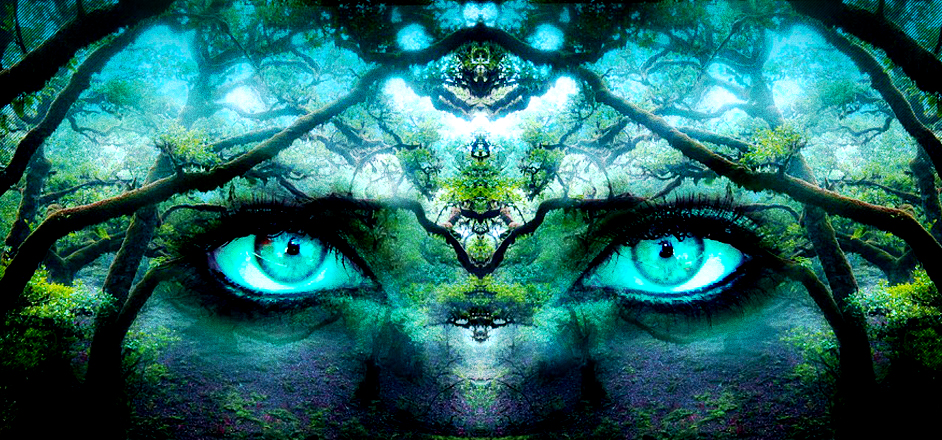There aren’t many places in the Western world where one can get their hands on good ibogaine. It’s a schedule I hallucinogenic, derived from the roots of the iboga shrub — a rainforest plant native to Central Africa. The stuff is both strange and exotic; powerful, not just in its ability to induce psychedelic states, but also because recent research suggests it may be one of the best addiction therapy treatments known to man.
Its effects, though, are bizarre and by all means, spiritually dense. Originally used by African tribes for coming-of-age ceremonies, tribal dances and other rituals, the ibogaine trip is an edgy experience. It causes anxiety, dizziness, disorientation and disassociation. The visuals range from complex geometric patterns, like mandalas, to outright delusions and hallucinations of space travel or spiritual encounters. Many also report instructive replays of past life events; confrontations that can, sometimes, help a person to overcome their fears.
Yet according to one study that examined the potential for using ibogaine to treat meth addicts, the medicine has a 50-80 percent success rate at tapering a user’s addiction. The study makes sure to note, however, that long term recovery and relapse avoidance do require further therapy and rehabilitation. So, it’s no instant remedy, nor is it always an easy one. But, it has undeniable potential for treating opioid, meth and alcohol addictions — three problems deeply entrenched in America right now.
And yet, it is forbidden by law within the U.S.

About forty-five minutes after eating ibogaine, the effects begin to take hold and the user’s long and daunting journey begins. A journey that usually lasts for around 24r hours, often rolling into the following day. It’s a long and intense trip, ibogaine. And one that does not have a lot of potential for recreational abuse, according to the Multidisciplinary Association for Psychedelic Research (MAPS).
However, when it comes to therapeutic or clinical uses, that is another ballpark entirely.
Because, self-reflection and “faces from the past” are an extremely vivid part of the ibogaine experience. Many addicts are forced to confront suppressed memories, or shamanic visions that help to conquer negative emotions and put their personal fears to rest.
“I became aware of something hovering over me,” described one user on Erowid.com who had traveled to Mexico to experience the drug. “It began rifling through all the images, experiences, and scenes stored in my memory. You could tell that it had access to every file and nothing was left hidden. Every secret, every dream, every disappointment, they were all laid bare before it.”
Another user, who was using ibogaine for alcohol relapse prevention, described his experience from the time he began to feel the effects: “Next 12-18 hours: Inner voyage (with eyes closed; looked like a flat-screen movie) examining life experiences and choices from a neutral perspective while on a trip down a river.” They noted later in their report: “Two weeks later, I feel exactly the same blessings and have gained a new enthusiasm for life from a completely different perspective.”
Not all ibogaine experiences leave such a bright afterglow though. Some therapeutic users describe its effects as compressing years and years of therapy into 24 hours of dark, intense psychedelia. It can be uncomfortable, overwhelming and even traumatizing.
And it isn’t as safe as some psychedelics. There have been a few fatal reactions to ibogaine in recent years. It’s rare, reportedly only happening once in every 300 cases, according to MAPS. But it does happen occasionally — usually because of careless administration of the medicine. Which is why it’s so important to find a legit ibogaine medical treatment center, and not just some backwater indigenous “shaman” who’s just trying to make a quick buck.
To find those you need to search south of the border. Many doctors and therapists who recognize ibogaine’s potential as an addiction therapy drug have had to move their practices out of the U.S. in order to legally administer ibogaine therapy to those who need it. So, some of the closest, and most trustworthy ibogaine treatment centers are found right at the Mexican-American border, in places like Tijuana.
It’s expensive, though. A typical, medical clinic ibogaine session will cost about $3,000-4,000.
But that’s a small price to pay for physical freedom; a cheap bail to fork over to shed the shackles of a serious addiction. And it’s a cost that’s sure to drop, as more research begins to trickle in on this miracle medicine. If it can help to cure America’s opioid epidemic, meth addiction and even alcohol problems, then there’s reason to believe the prohibition of ibogaine is not long for this world.





Leave a Reply
You must be logged in to post a comment.